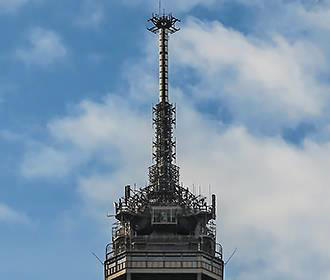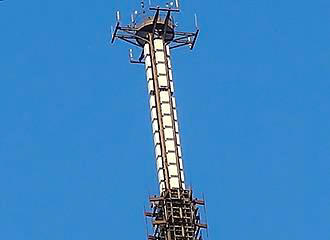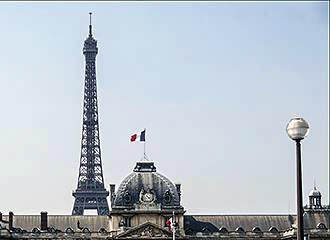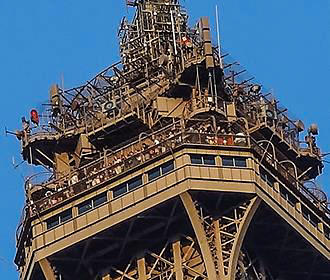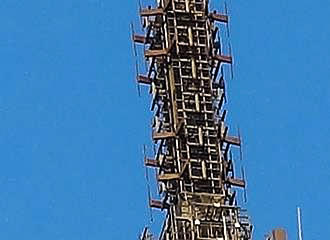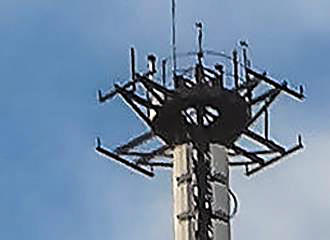Paris Eiffel Tower communications and science experiments
The Eiffel Tower was originally meant to be destroyed after 20 years, however, Gustave Eiffel who was the designer and engineer of this iconic landmark in Paris, knew that by utilising the tower for scientific experiments and communications, it would prolong its existence.
And even though there were many people against the whole design and concept of the tower from the very beginning, Gustave Eiffel made a point of the amount of different uses it could have from the very beginning and lots of scientists were behind this great engineer supporting him.
So this why the Eiffel Tower still stands today and why it is still the most visited paid monument in France and the majority of people that go on holiday in Paris will visit the Eiffel Tower, but lets see how the science and communications made such an impact on this Paris landmark.
History of the science and Eiffel Tower communications
It was the day after the Eiffel Tower was first inaugurated in 1889 that a meteorology laboratory was installed on the third floor that Gustave Eiffel used to conduct numerous experiments and there were many types of scientific devises that were installed in the tower for other scientists to conduct experiments as well.
In fact, it was the Eiffel Tower that held the very first radiographic experiments in France and in 1898 the very first telegraph link went from the Pantheon to the Eiffel Tower covering a distance of 4km.
Gustave Eiffel then decided to allow the Minister of War to place antennas on the top of the tower to conduct experiments and in the January of 1904 the tower transmitters went into the history books, which is when the military network of communications started to get established.
Then in 1905 a link between fortified towns in Eastern France with the Eiffel Tower in the Ile de France region were established, but things continued to progress from there and an even greater link was established with Casablanca during the Morocco campaign relayed via an armoured cruiser.
And by 1909 the military telegraph station was completed including an underground station that was installed, but it was also this same year that the very first wireless telephone trials were starting to be conducted at the Eiffel Tower as well.
The next major step forward came in May the following year with the first regular time signal transmissions that could be heard over 5,000km away and thanks to Commander Ferrie it became possible to set up an international time organisation in order to determine accurate time zones throughout the world along with making accurate longitude co-ordinates.
By 1911 the Eiffel Tower had communications with aeroplanes, which also meant that this station played a key role when the First World War broke out and they were able to communicate with the taxi drivers to help thwart the invasion of the German army when they neared Paris, the capital city of France.
It was then on the 10th November 1918 that the Eiffel Tower picked up a message from the German command agreeing to the armistice, which brought an end to the awful conflict of World War I.
After the war, experiments such as radio broadcasts were being conducted and in 1922 a temporary studio was set up for these, but by 1925 the very first TV tests were also being conducted at the Eiffel Tower by Edouard Belin.
Then by 1929 there were three broadcasts per day from 350 different weather stations throughout the world such the Atlantic Ocean, Iceland, numerous places in Europe, right through to North Africa and the Cape Verde islands.
However, it was not until 1935 that France saw the very first TV broadcast from the Eiffel Tower and even though there were only approximately 60 lines initially, by 1945 this had risen to an astonishing 441 lines.
1953 saw the start of Eurovision, which has become one of the top distributors for news and sports coverage for the world’s best broadcasting platforms. And it also saw the coronation of Queen Elizabeth II in England, so by 1957 a permanent TV antenna was placed on the top of the Eiffel tower, which made the height of the tower grow to over 318 metres.
Over the years more antennas were put in place and after work was carried out by Telediffusion de France on a UHF antenna in the year 2000, the new height of the Eiffel Tower became 324 metres, which is the height it remains today.
And everyone has now heard about digital TV, and yes, you have guessed it, the very first digital broadcasts in Paris originated from a transmitter on the Eiffel Tower and as of 2012 there are a total of 120 antennas on the top of the Eiffel Tower, which will no doubt grow in the future.
